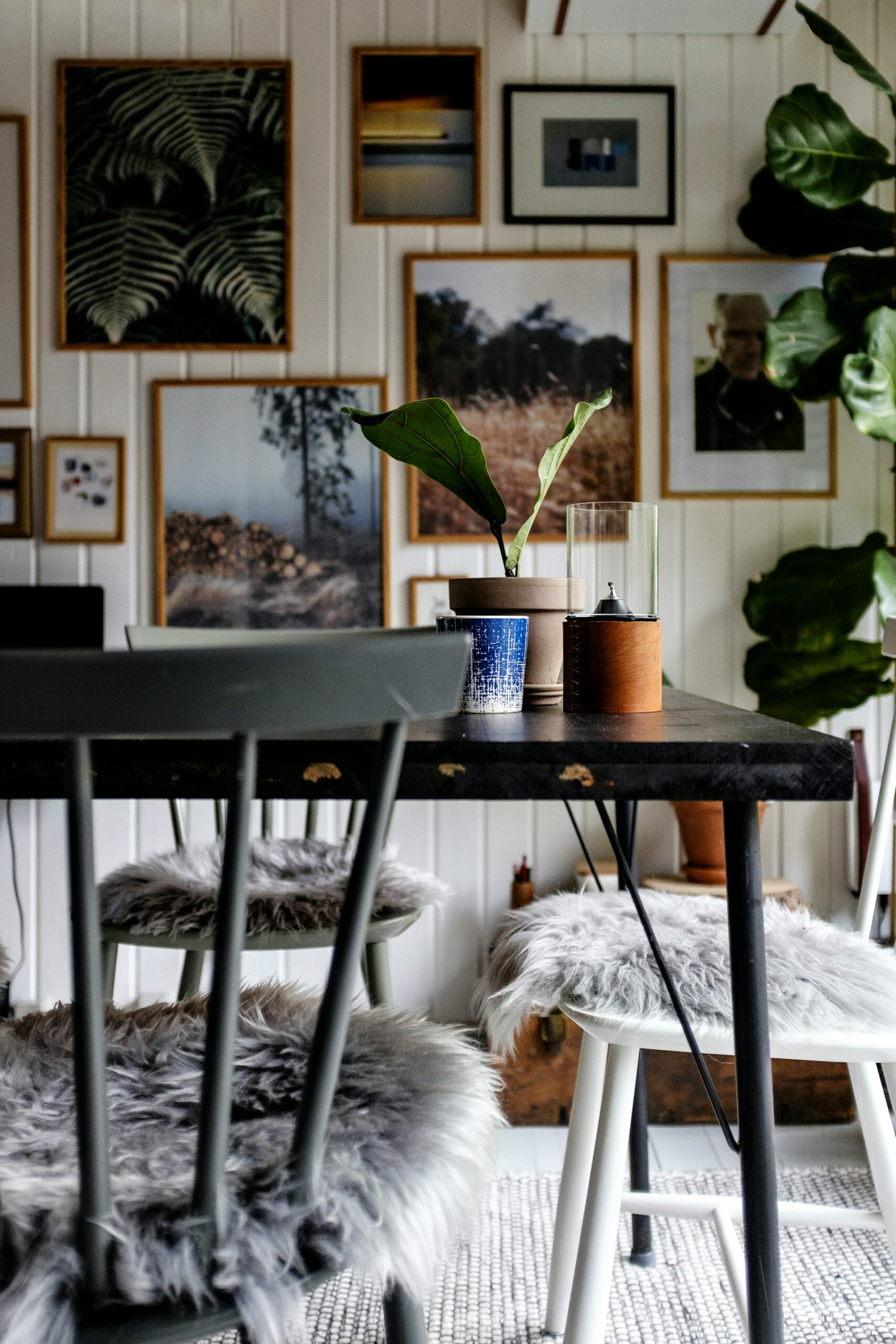The dining room is more than just a place to eat; it’s a space for family gatherings, celebrations, and intimate dinners. Styling your dining room to reflect both functionality and aesthetic appeal can enhance these experiences.
Here’s how to create a dining space that is both inviting and stylish.
Pick a Theme
Start by choosing a theme that reflects your personal taste and works with the overall decor of your home. Popular themes include modern, rustic, traditional, industrial, and minimalist. A modern dining room might feature sleek furniture and neutral tones, while a rustic one could incorporate natural wood and earthy colors. Decide on a theme that you love and can envision in your space.
Select the Right Furniture
The dining table is the centerpiece of the room, so choose one that fits your style and the room’s dimensions. For smaller spaces, a round table can be a great space-saver and encourages conversation. Larger rooms can accommodate grander tables, such asrectangular or oval ones. Materials like wood, glass, or metal each offer different vibes.
Dining chairs should be comfy and complement the table. Mixing and matching chairs can add a unique touch, but ensure they share a common element, like color or material, to maintain cohesiveness. Benches are another option for a casual and space-efficient seating arrangement.
Select Elegant Tableware
Tableware is an essential element in dining room styling that often gets overlooked. Choose dinnerware, flatware, and glassware that complement your theme. For a modern look, go for sleek, minimalist designs in neutral colors; for a more traditional or rustic theme, consider classic porcelain or earthenware with intricate patterns or warm, earthy tones.
Investing in high-quality tableware can elevate your dining experience and make even casual meals feel special. Don’t forget to incorporate stylish serving dishes and cutlery sets from Lincoln House that coordinate with your tableware to maintain a cohesive and polished look.
Focus on Lighting
Lighting can help to set the mood. A chandelier or pendant light over the dining table can serve as a focal point and add elegance. Ensure the light is dimmable to create various atmospheres, from bright for meals to soft for intimate gatherings. Supplement with wall sconces or floor lamps to add layers of light and enhance the room’s ambiance.
Add a Rug
A rug can anchor the dining area and add texture and color. When choosing a rug, ensure it’s large enough so that chairs remain on it even when pulled out. Durable materials like wool or synthetic blends are ideal for handling spills and heavy foot traffic.
Incorporate Storage Solutions
Functional storage like buffets, sideboards, or cabinets can store dining essentials such as dishes, silverware, and linens, keeping them within easy reach. These pieces also provide an opportunity to display decorative items like vases, art, or family photos.
Personalize with Decor
Decorative elements can infuse personality into your dining room. Consider artwork that complements your theme, whether it’s modern prints for a contemporary space or landscape paintings for a traditional setting. Mirrors can make the room appear larger and reflect light, enhancing the room’s brightness. Centerpieces for the dining table, like candles, flowers, or bowls of fruit, can add charm and sophistication. Change these with the seasons to keep the
look fresh.
Ensure Comfort and Flow
Finally, ensure your dining room is comfortable and functional. The furniture should be arranged to allow easy movement around the room. Pay attention to the ergonomics of your seating and the height of your table to ensure everyone has a pleasant dining experience.





